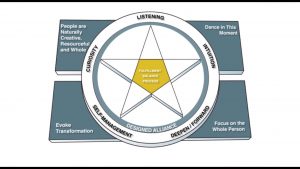How to Change Careers at ___ Years Old
Whether you are 30, 40, or 50 years old, the process of how to change careers is the same. With the consistent rise of life-expectancy in the United States, what used to be considered middle-aged is continually being extended. It is also very subjective. Some people might feel “middle-aged” at 40, while others won’t feel old until they are 65. Many of us consider 30 years old being young, but for some people that have struggled to make it out of poverty, 30 years old is a lifetime.
So, are you thinking of how to change careers? Are you 30, 40 or 50? Does age really have anything to do with it, or is it the circumstances you find yourself? We will show you that the same process can be applied to any age. In fact, we are going to tell you how to change careers in 5 simple steps.

1. Self-reflection and Looking Inward
First of all, let’s talk about being in your 40s. According to the CDC, life expectancy in the United States is 78.6 years. So, turning 40 is almost right in the middle of that. It’s a time in your life that you can look back, reflect, and plan ahead. Your 40s are very special because you have the most comprehensive perspective on your life experience. But did you know that the classic “mid-life” crisis is a myth? No credible research has been found of a crisis occurring. Doesn’t that make you feel better?
A common misconception of a “mid-life crisis” is the act of self-reflection. What is self-reflection? According to the Merriam-Webster dictionary, self-reflection is the “careful thought about your own behavior or beliefs.” It is a very healthy part of self-development and improvement of one’s life and is the first step in the process of how to change careers.
For some reason, society or individuals put a negative spin on someone wanting to change their lives in their middle-age and have called it a “crisis.” It is nothing of the sort, but an act that we must all do from time to time if we wish to improve anything at all about ourselves.
Self-reflection can also be thought of as looking inward, and it has been studied for nearly a century. In 1997, researchers Scanlan and Chernomas (1997) proposed a methodology for self-reflection, which comprises of three stages.
- Awareness – this means to be present and aware of current thoughts, feelings, or doubts.
- Critical Analysis – this means to analyze the thoughts, feelings, and doubts that you have become aware of at that mom.
- Learning – taking the knowledge from the critical analysis stage, one has a new outlook on the situation and can move forward with an original purpose.
Developing in a new perspective on things is critical when deciding to change your career. Maybe changing careers is not a good idea. Only through self-reflection can you find this out.

2. Decide What You Want To Do
The process of self-reflection reveals where we are now based on past life experiences. Having a new perspective on life is refreshing and allows us to ask the question, what do I want to do now? Choosing what you want to do is the second step in the process of how to change careers. Deciding what to do now might be a difficult question to answer. But if you go through the stages of self-reflection and looking inward, it should be an easy one to answer.
There are some questions to answer when trying to figure out what you want to do. For example, what are you passionate about? Being passionate about a career means that you will always be motivated to do what’s right no matter what. Passion also exudes courage and demands respect from others, which are a great combination for success.
Another question you might want to ask yourself is, what will make me feel better? For many of us, the act of helping out others in need is something we want to do for a living. Have you ever witnessed a situation where someone is apparently in need of help in a public place? There is always one person that is ready and willing to offer their assistance. Are you that person? Some individuals are just wired that way and thrive in situations that demand their helping spirits. God bless them. They make the world a better place.
There is a place for all of us in this world. And knowing what you want to do will put you on that path to a new career.

3. Choose Your Educational Path
The third step in the process of how to change careers is choosing your educational path. Advances in technology are occurring at such a rapid rate; it is impossible to monitor. And while every industry is experiencing exponential growth in information, it can all be attributed to advances in communications and computing power. Terms like artificial intelligence, driverless cars, and missions to Mars were not around a decade ago. All these advances in technology make the availability of knowledge easier for those that seek it.
After you have done your self-reflection and decided on what to do, it is time to choose your educational path. Even though the price of education is on the rise in the United States, getting a student loan is made easier because of government support. Many schools are also offering programs entirely online. That is one way of obtaining knowledge.
Some states, such as California, offer apprenticeship programs. California is one of a few states that allows future lawyers to go through an apprenticeship program instead of going to law school. An apprenticeship offers on-the-job training from an expert in a particular field, and for some people, this is an ideal way to enter a new career.
Another way of obtaining knowledge is through mentors and life coaches. Organizations such as the Coaches Training Institute (CTI) have been around for 25 years. They have been instrumental in the creation of a coaching culture and have expanded internationally. CTI, and others like them, have developed methodologies for training life coaches to be useful in helping people change their lives.
Whatever path you decide to take, stick with it and keep your eye on the goal. Day by day you will begin to feel more confident and ready to enter your new career.

4. Practice, Practice, Practice (Knowledge Externalization)
The fourth step in the process of how to change careers is implementation or practice. There is a concept in knowledge management referred to as knowledge externalization. It has been a field of study for many years regarding organizational knowledge, how to create new knowledge, and how to transfer it. Knowledge externalization is when a person (or organization) take in new knowledge after self-reflection and expresses the new knowledge through their own ideas, thoughts, documents, and graphs.
During the process of knowledge externalization, we come up with our own individual and unique ideas in a specific field. It might be a new methodology or process that we discover, or it might be a solution to an age-old problem. But externalization is the culmination of steps 1 through 4 of how to change careers. It is when we make ideas of our own which contribute to the advancement of the field we are in. This process is how information is created, retained, built upon, and then transferred down through the generations.

5. Reach Peak Performance
The fifth step in the process of how to change careers is reaching peak performance. We live in a universe that is always in motion, but most importantly, cyclical. These cycles of ups and downs can be seen everywhere in nature, and in the human world. So, the process of attaining new knowledge and applying it will have a peak. Take, for example, a professional athlete. They try as hard as they can to extend their peak performance as long as possible, but someday they have to throw in the towel.
Many of them, however, become coaches in their particular sport to keep contributing, while others change careers entirely. It is around this time that you have another self-reflection. It is recommended that you look inwardly often to assess your situation and if you are happy with the way things are working out for you. Then repeat the steps discussed in this post.
Give Back and Mentor
If you are still passionate about the field that you are in and feel accomplished, then mentoring or being a life coach could be a good option for you. Many of us have mentors that helped us along the way, so it only makes sense to give back. Kevin Spacey has a great quote that captures the essence of mentoring, “If you’ve done well, it’s your obligation to spend a good portion of your time sending the elevator back down.”
The process of how to change careers can be as simple as the 5 steps listed on this page, however, it requires a lot of patience and perseverance. Something a mentor or life coach can definitely help you with.
Terawatt – Bringing Mentors and Students Together
At Terawatt, we recognize the power of mentorship for individuals that seek out a career change. We know the courage it takes to initiate such a move. But having a support system there can make the transition easier. We are providing a platform where mentors and students can support each other through live group video courses. The benefits of a live class are the instantaneous feedback received by all participants. While other online course platforms provide a learning experience through saved online courses, they lack the intimacy needed for a successful mentorship program.
The mentors and life coaches themselves develop our courses. They are offering students practical ways of improving their lives through techniques they have identified and implemented successfully.
Changing careers is not easy, but you don’t have to go it alone. Terawatt provides an experience you won’t find anywhere else.
This post was originally posted on the Terawatt website
I have syndicated this article with permission from the site owner. If you have any questions, I can be contacted here.



